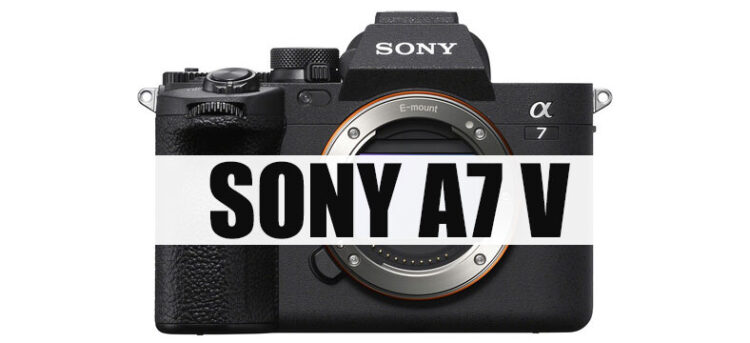
Sony A7 V camera is expected in late 2024, and we informed you back in May 2024 [Sony A7 V Coming in 2024 – Latest Rumors]. Now, other rumor websites are also suggesting an early announcement. Why are other rumor mills saying “they are expecting an early ann..” since they were first told that A7 V will arrive in 2025. Now they are fixing their rumor as they always do.
Sony A7 V Latest Rumors from Webio
Look at the Chinese rumor we have received right now:
Not long ago, Nikon released their brand new Z6 third-generation camera, the Z6III, which features the first “partially stacked” sensor. The new sensor improves FAST continuous shooting for both stills and videos at higher frame rates.
Many people are curious about this sensor. However, there have been recent rumors suggesting that Sony’s new A7 series camera might, possibly, use the same sensor as the Nikon Z6III. There are speculations that the Z6III, being a comprehensive mid-range model, directly competes with Sony’s A7 series, which might potentially accelerate the release of Sony A7V to some extent.
—— End of rumors —-
Do you think that Sony will use the Z6 Mark 3 camera’s Exmor sensor to resolve their speed readout issues and all that? I don’t think so because I don’t believe Sony will decrease the sensor resolution of their A7 V camera. They will likely update the A7 IV camera sensor with stacked TECH, AI chip, and a faster image processor.
Let me know ur thoughts on this
Check out more
Wild Rumors: Sony FX30 II, Sony FX30 R and Sony ZV-E1 II Coming in 2025
Follow us on our social pages FACEBOOK | TWITTER | INSTAGRAM, If you have time –>see more Sony Alpha Rumor







My WISH List from SONY
Sensor and Image Quality:
Sensor Type: 33MP Exmor R CMOS, partially stacked
ISO Range: 100-51,200 (expandable to 50-204,800)
Dynamic Range: 15 stops
Image Stabilization: 5-axis in-body image stabilization, up to 6.5 stops
Autofocus:
Autofocus Points: 759 phase-detection points, 425 contrast-detection points
AF Sensitivity: -4 EV to +20 EV
AF Features: Real-time Eye AF for humans and animals, Real-time Tracking, Fast Hybrid AF, improved low-light AF performance, AI-enhanced subject recognition and tracking
Continuous Shooting:
Burst Rate: Up to 15 fps with AF/AE tracking
Buffer: Up to 200 RAW images or 300 JPEG images
Video Capabilities:
4K Recording: 4K at 60p/30p/24p with 10-bit 4:2:2 internal recording
1080p Recording: Full HD at 120p for slow motion
Video Features: S-Log3, S-Gamut3.Cine, HLG, HDR video support, real-time Eye AF for video, Active Mode stabilization, AI-enhanced video stabilization, AI-based noise reduction
Processing Power:
Image Processor: Dual BIONZ XR processors with dedicated AI chip
Startup Time: Faster startup and minimal lag
Display and Viewfinder:
Viewfinder: 3.69 million-dot OLED EVF, 120 fps refresh rate
LCD Screen: 3.0-inch 1.44 million-dot vari-angle touch LCD with AI-driven touch interface for improved usability
Build and Ergonomics:
Body Material: Magnesium alloy with improved weather sealing
Dimensions: Approx. 131.3 x 96.4 x 79.8 mm
Weight: Approx. 650g with battery and memory card
Connectivity and Storage:
Memory Card Slots: Dual slots supporting UHS-II SD cards and CFexpress Type A
USB: USB 3.2 Gen 2 Type-C
HDMI: Full-size HDMI Type-A
Audio: Mic input, headphone output
Wireless: Wi-Fi 5 (802.11ac), Bluetooth 5.1, FTP transfer support
GPS: GPS tagging via Bluetooth
Battery and Power:
Battery Type: NP-FZ100 rechargeable lithium-ion battery
Battery Life: Approx. 710 shots per charge (CIPA rating)
Charging: USB Power Delivery (PD) support
AI-Driven Features:
AI Autofocus: Enhanced subject recognition (humans, animals, vehicles) with faster and more accurate tracking.
AI Image Processing: Improved noise reduction, dynamic range optimization, and color accuracy using AI algorithms.
AI Scene Recognition: Automatic scene detection and adjustment for optimal settings in various shooting conditions.
AI Video Stabilization: Enhanced stabilization for smoother video recording, especially handheld.
AI-Assisted Composition: Suggestions and guidance for better framing and composition.
AI-Based Post-Processing: In-camera RAW processing with AI-driven enhancements and corrections.
Additional Features:
Customizable Buttons: Enhanced customization options for more control
Menu System: Revised menu layout for better navigation with AI-assisted help and tips
Shooting Modes: Enhanced HDR, Panorama, and low-light modes
Interval Shooting: Built-in intervalometer for time-lapse photography
Weather Sealing: Improved resistance to dust and moisture
@Amy, I think what you’ve got there is more of a novel than a wish list! Usually, wish lists are bite-sized—like 5 to 6 lines or maybe 12 max. Looks like you’re drafting the next camera manual!
I think sony should use A9 III IBIS as well as EVF to beat Z6 III
partially or not partially stacked…. 1/250 sensor readout is int speed must have list becouse this camera must be better than Z6 III and equal with Z8.
Sony doesn’t have a “cheap” camera with the capabilities of the Z8. A9 II is not concurrent, the A1 and A9 III is top category with top price. If Sony want to win the race, it must give a camera with Z8 capabilities about Z6 III price.